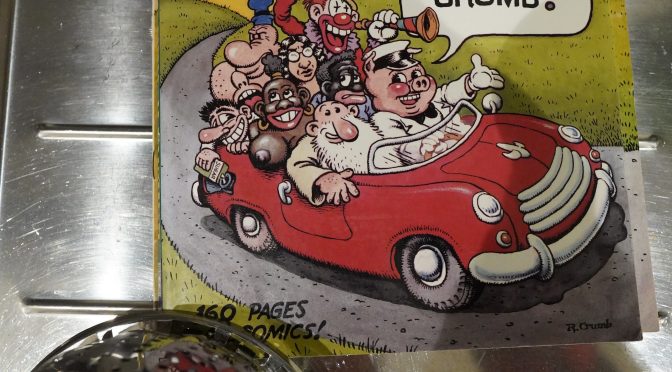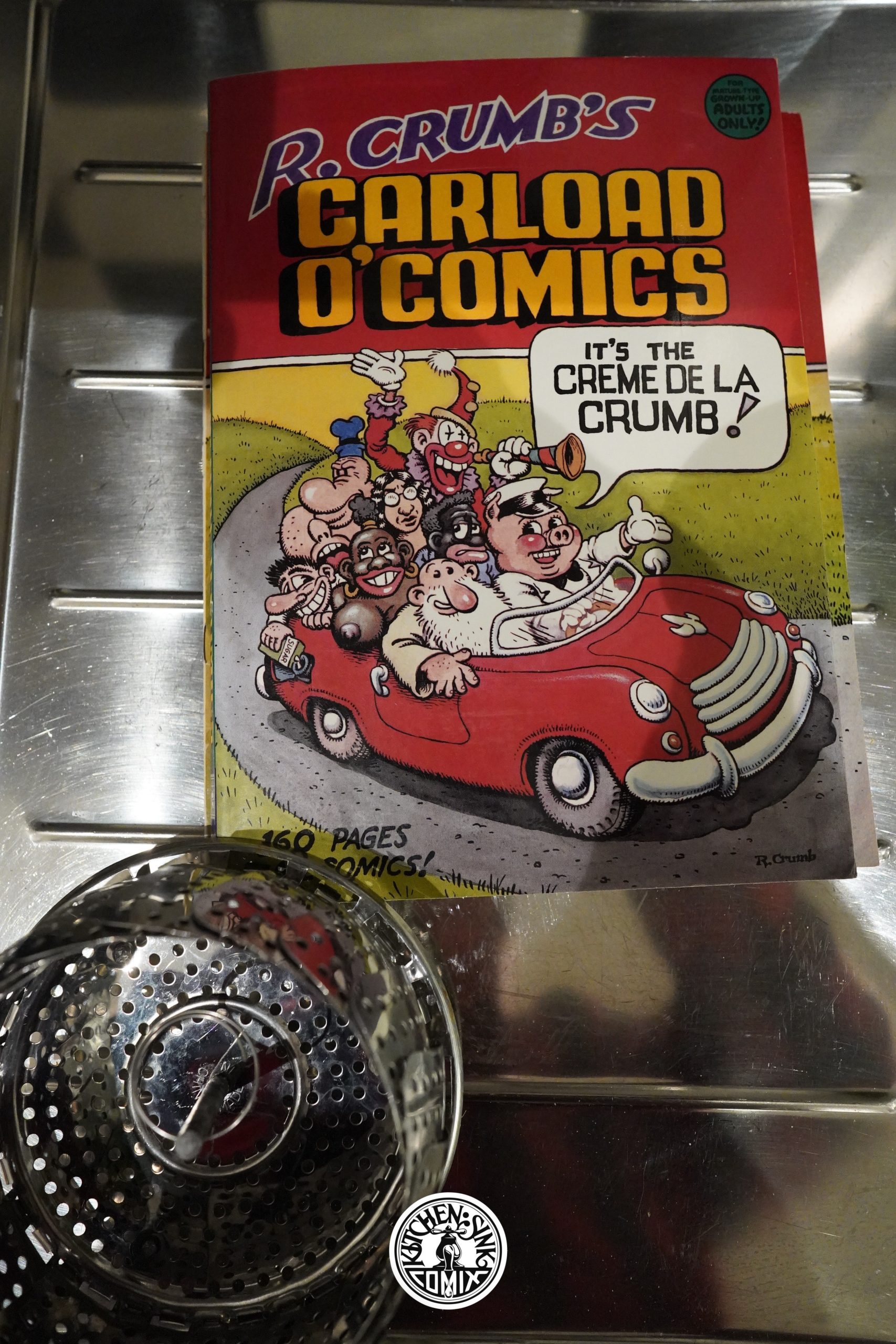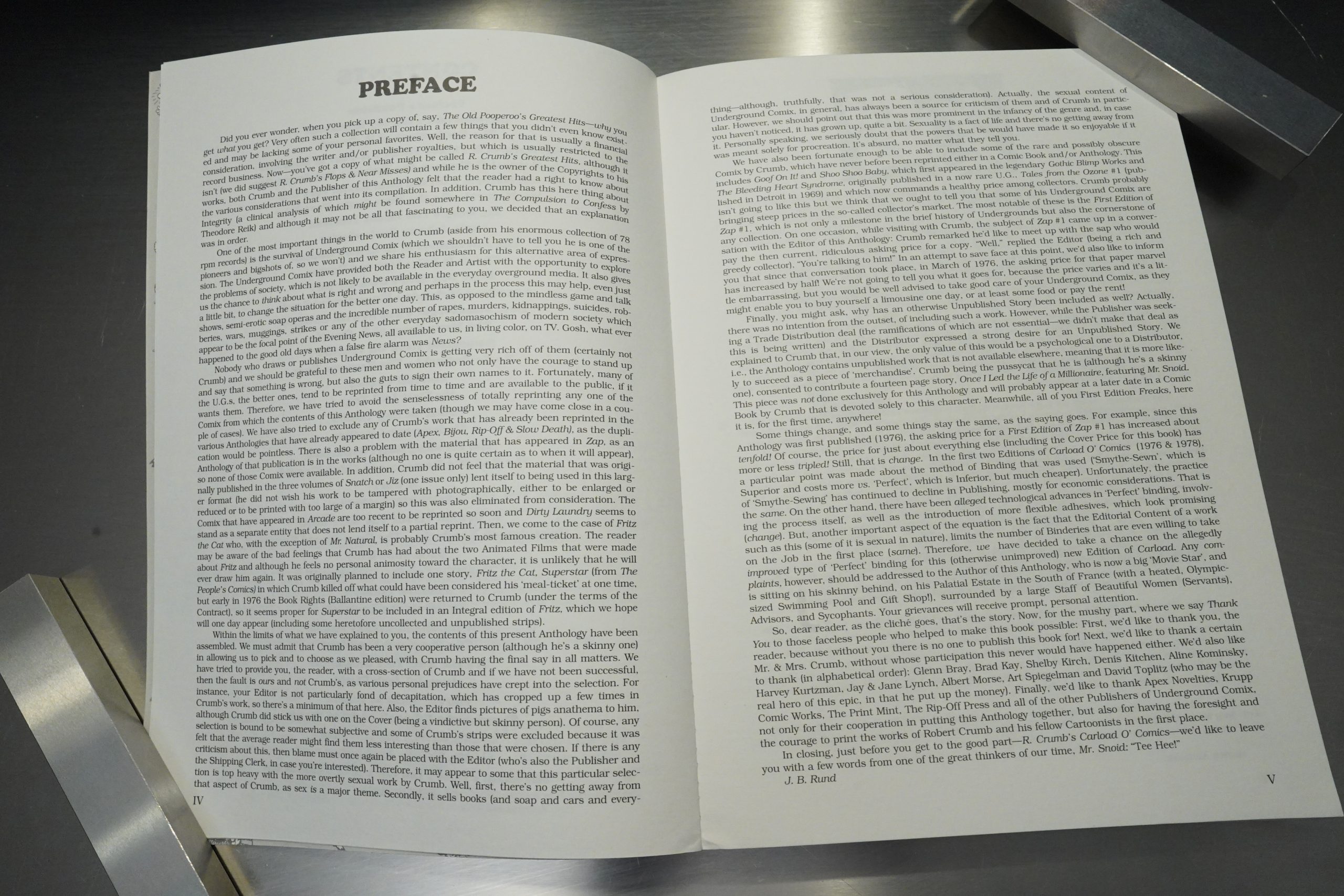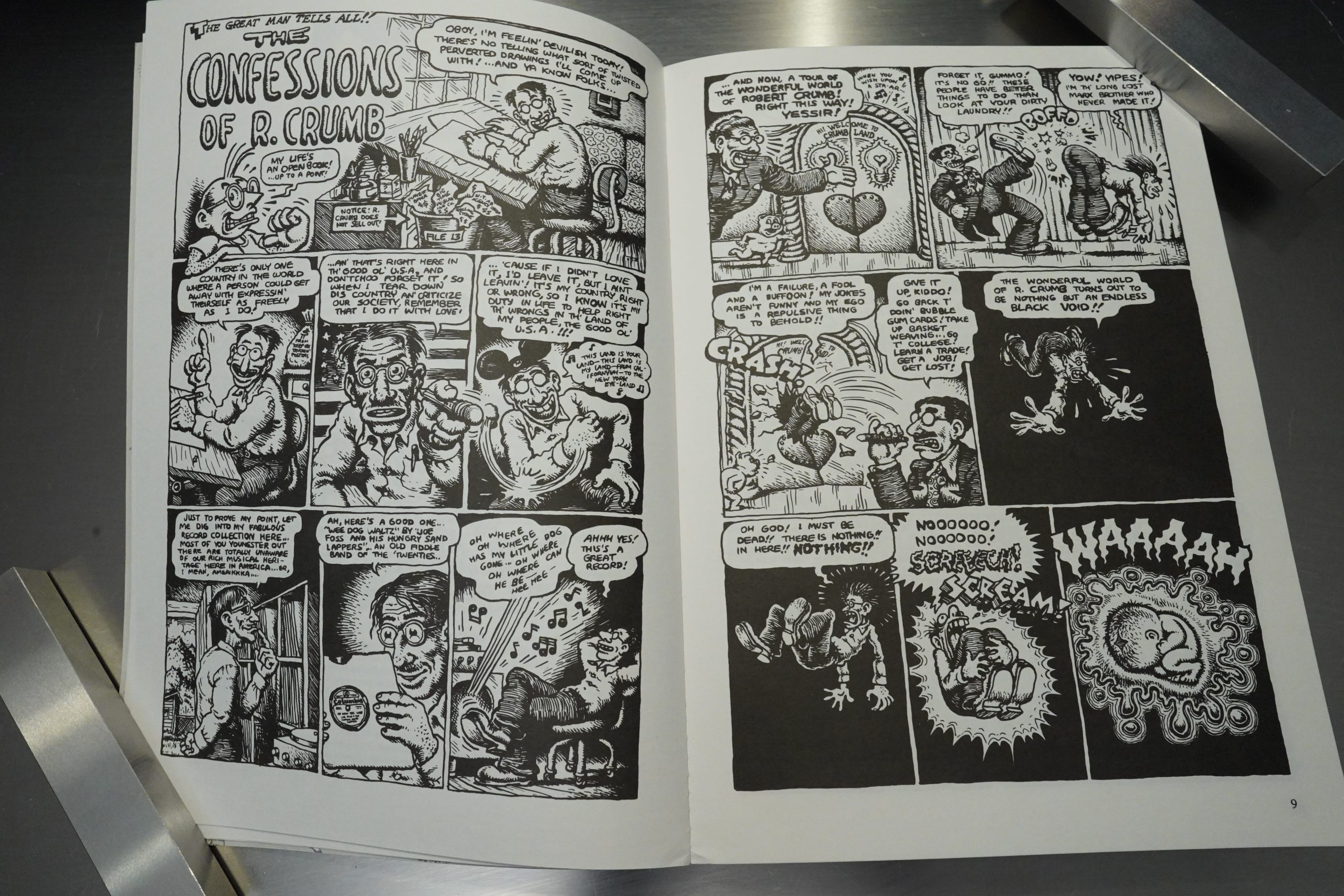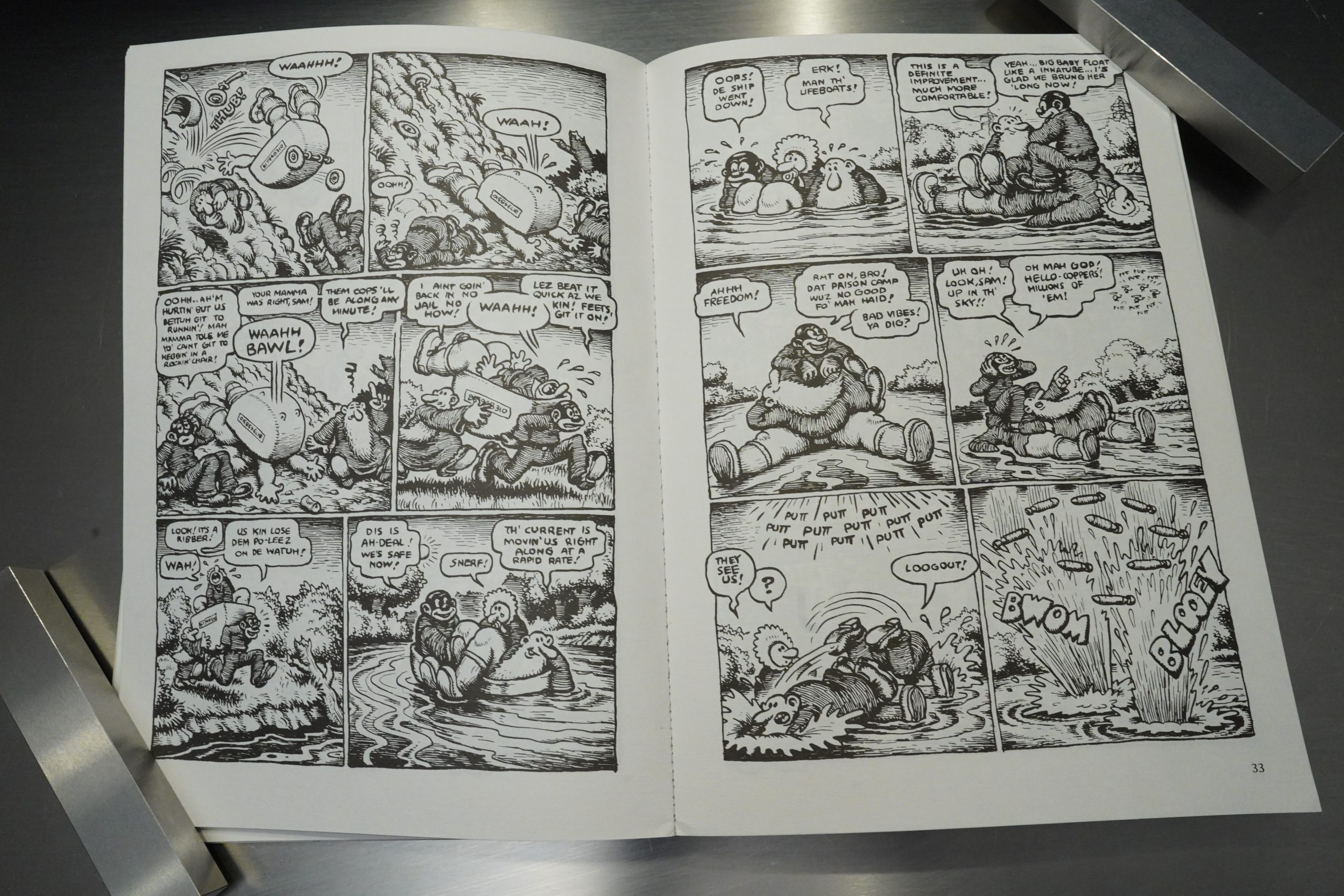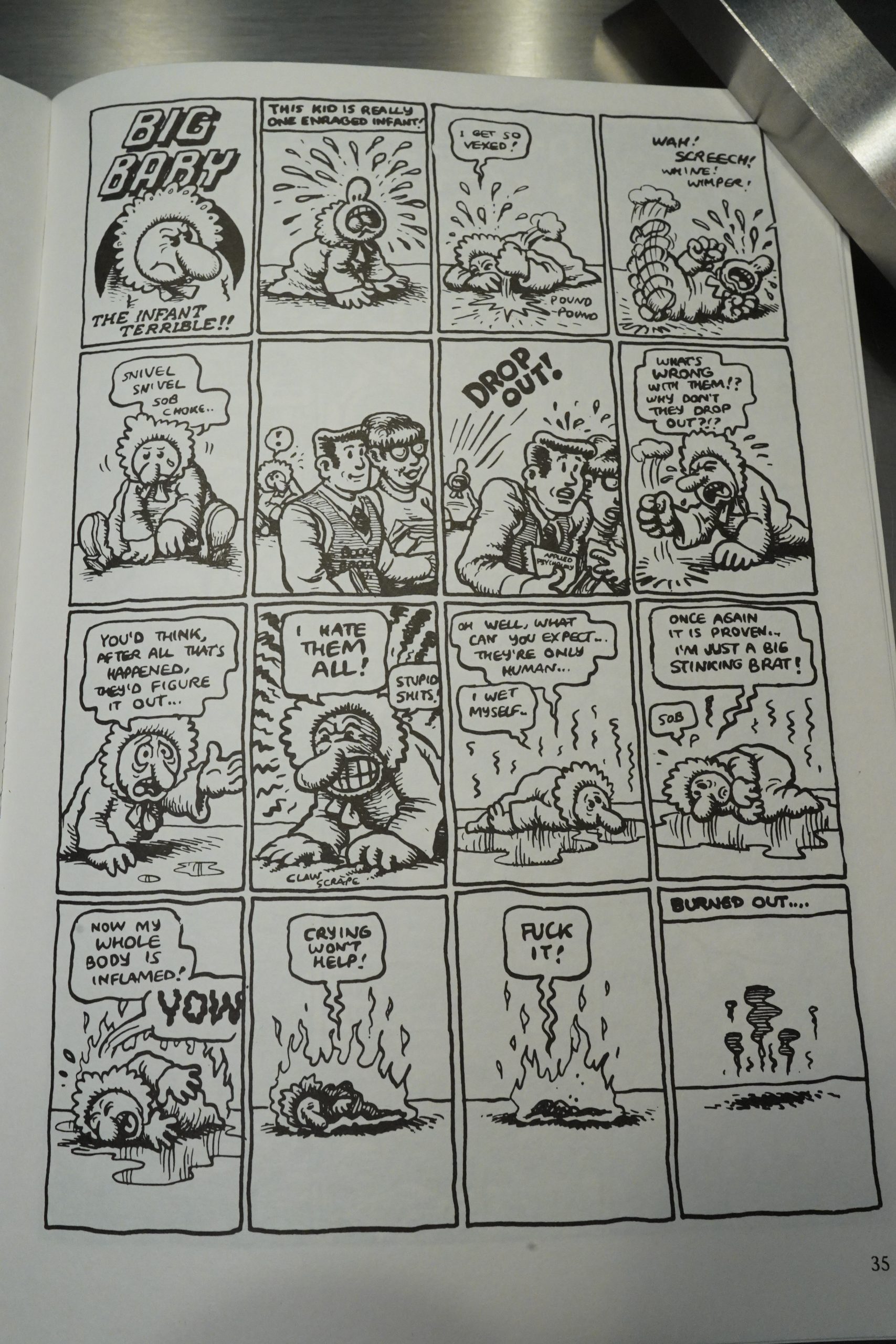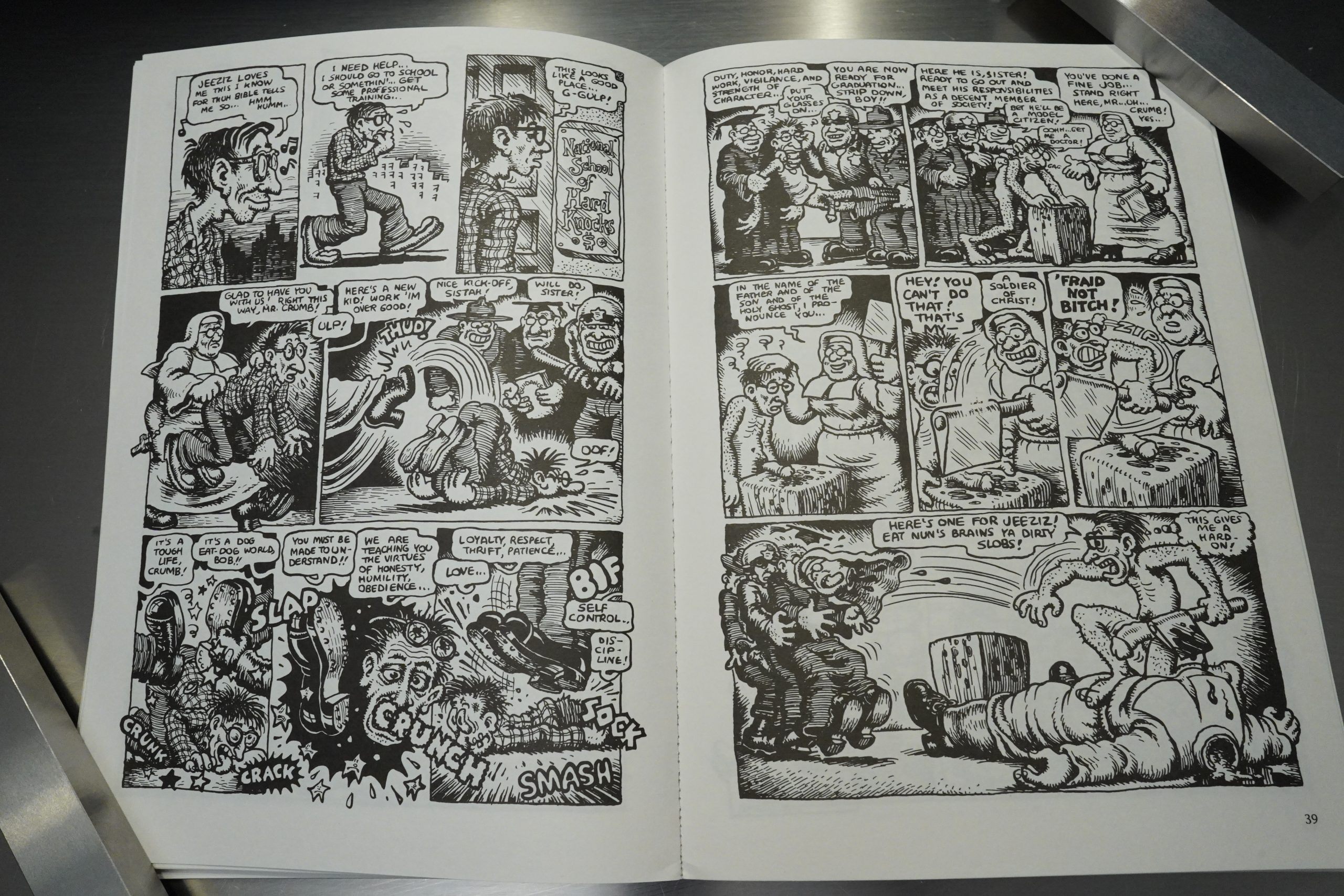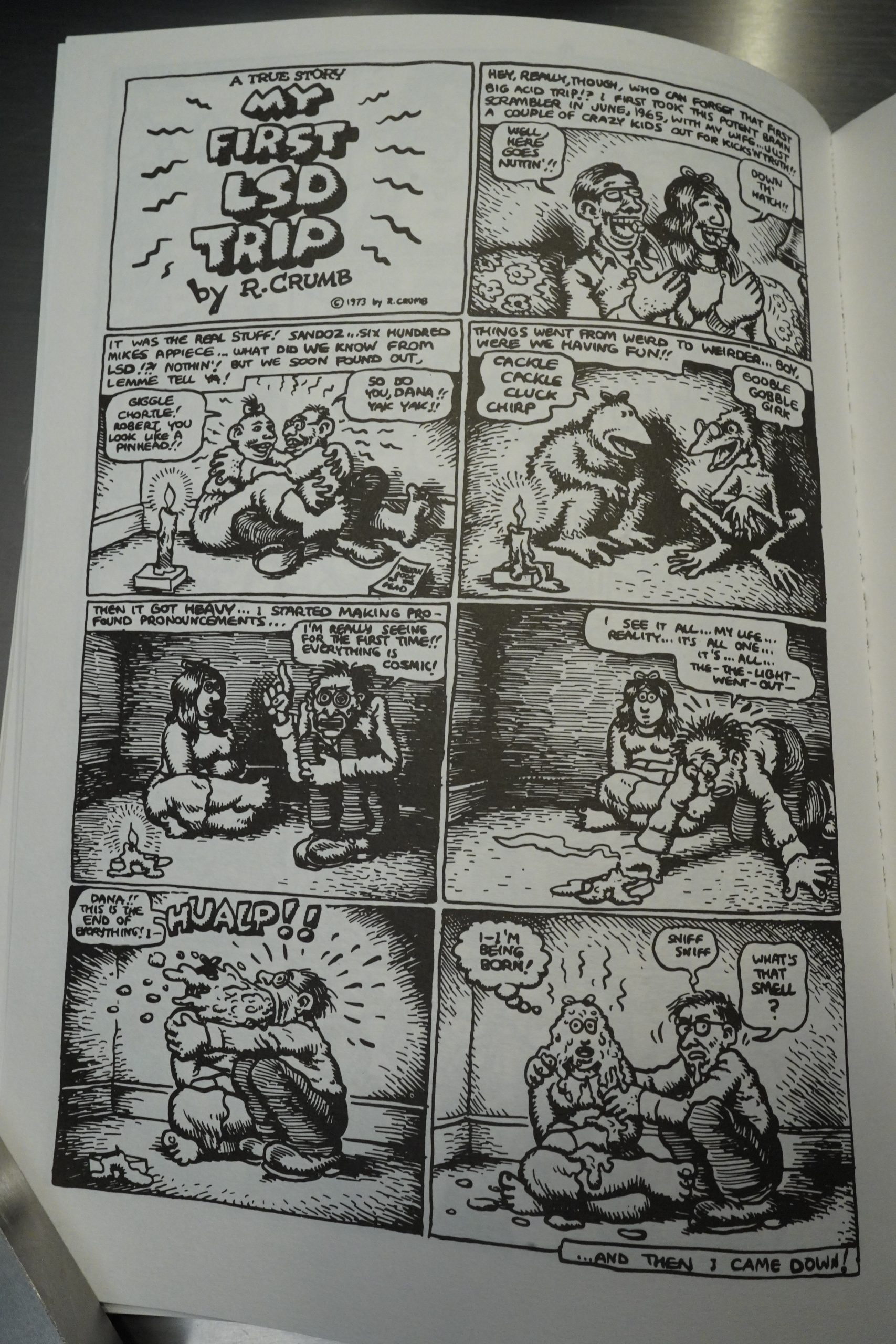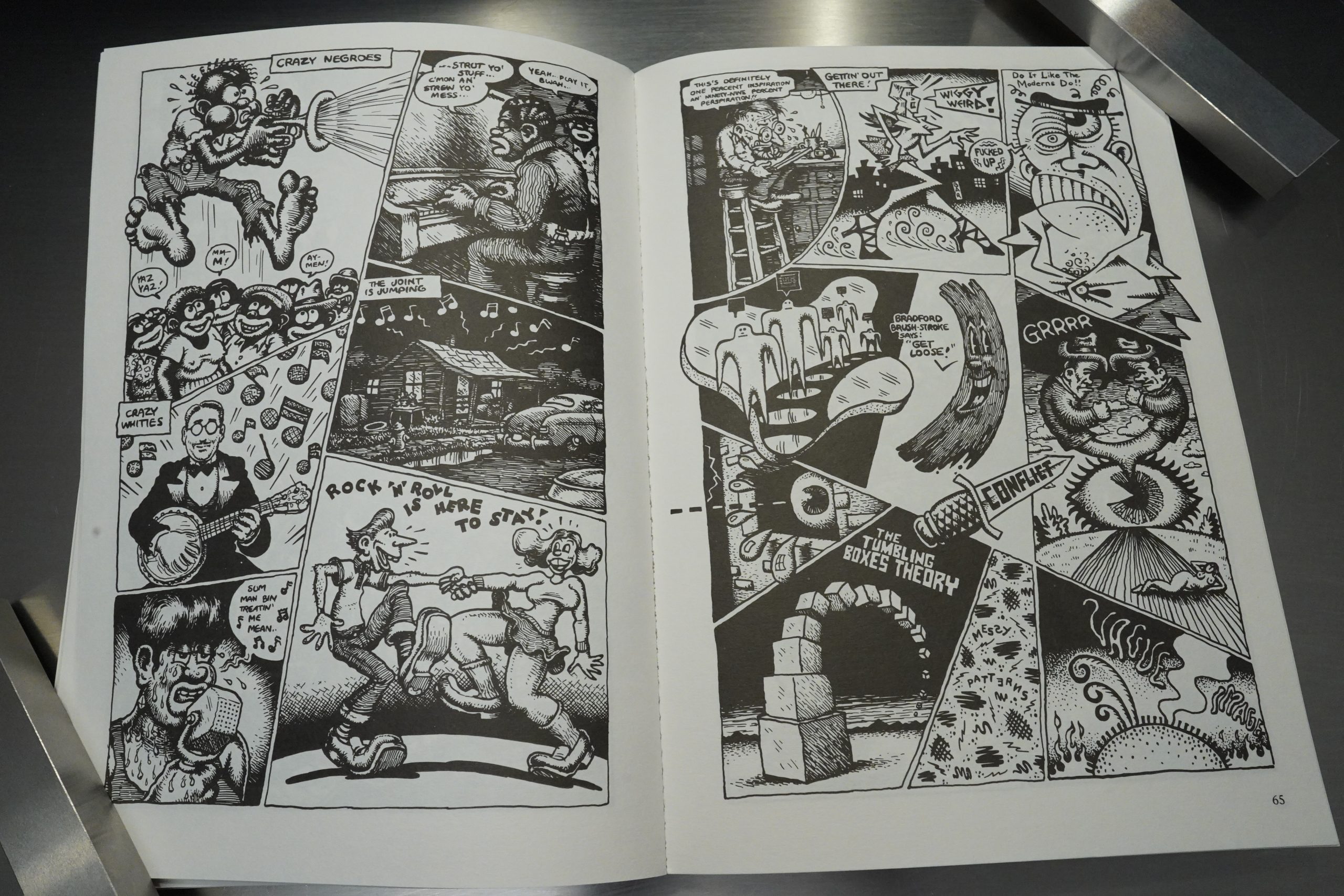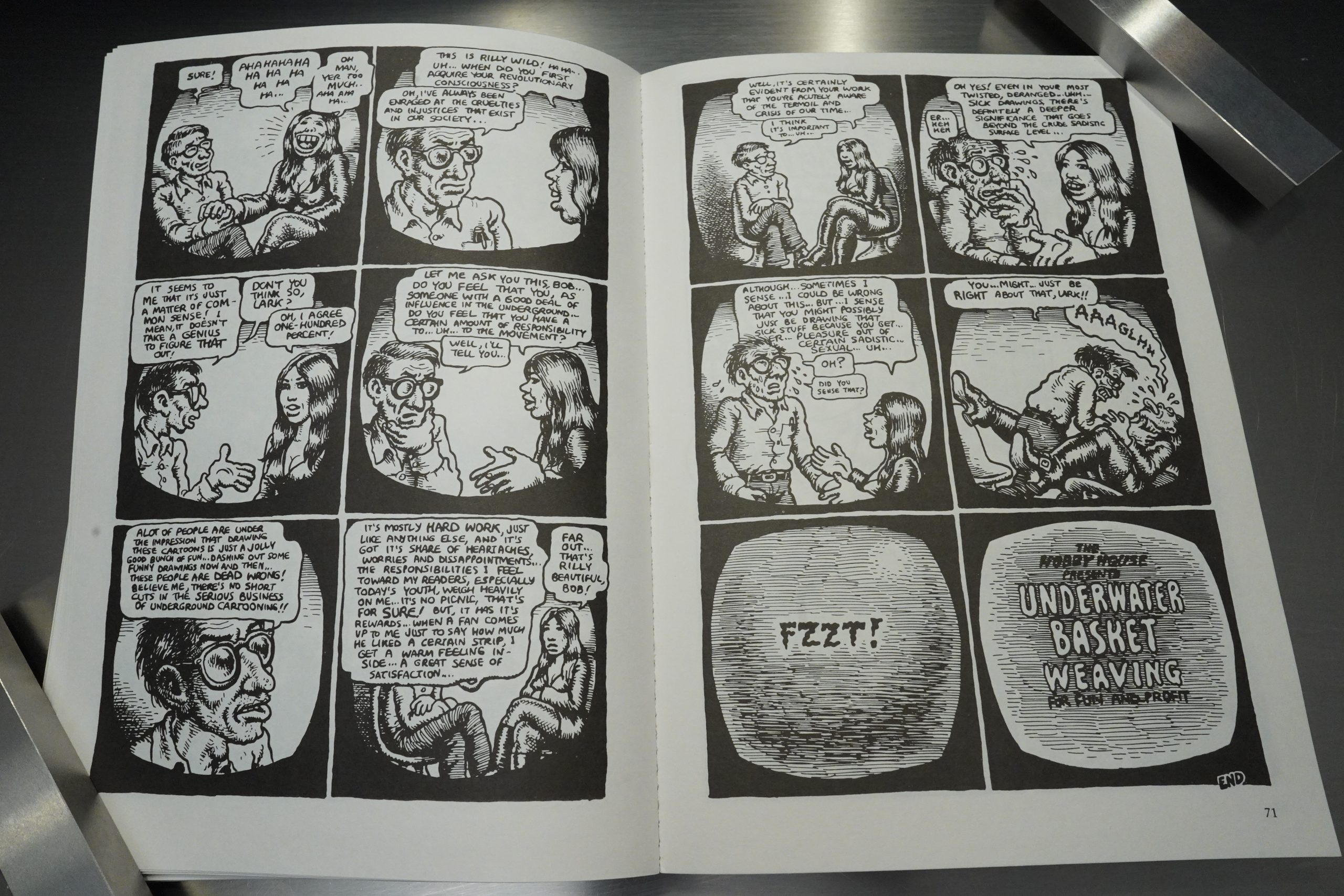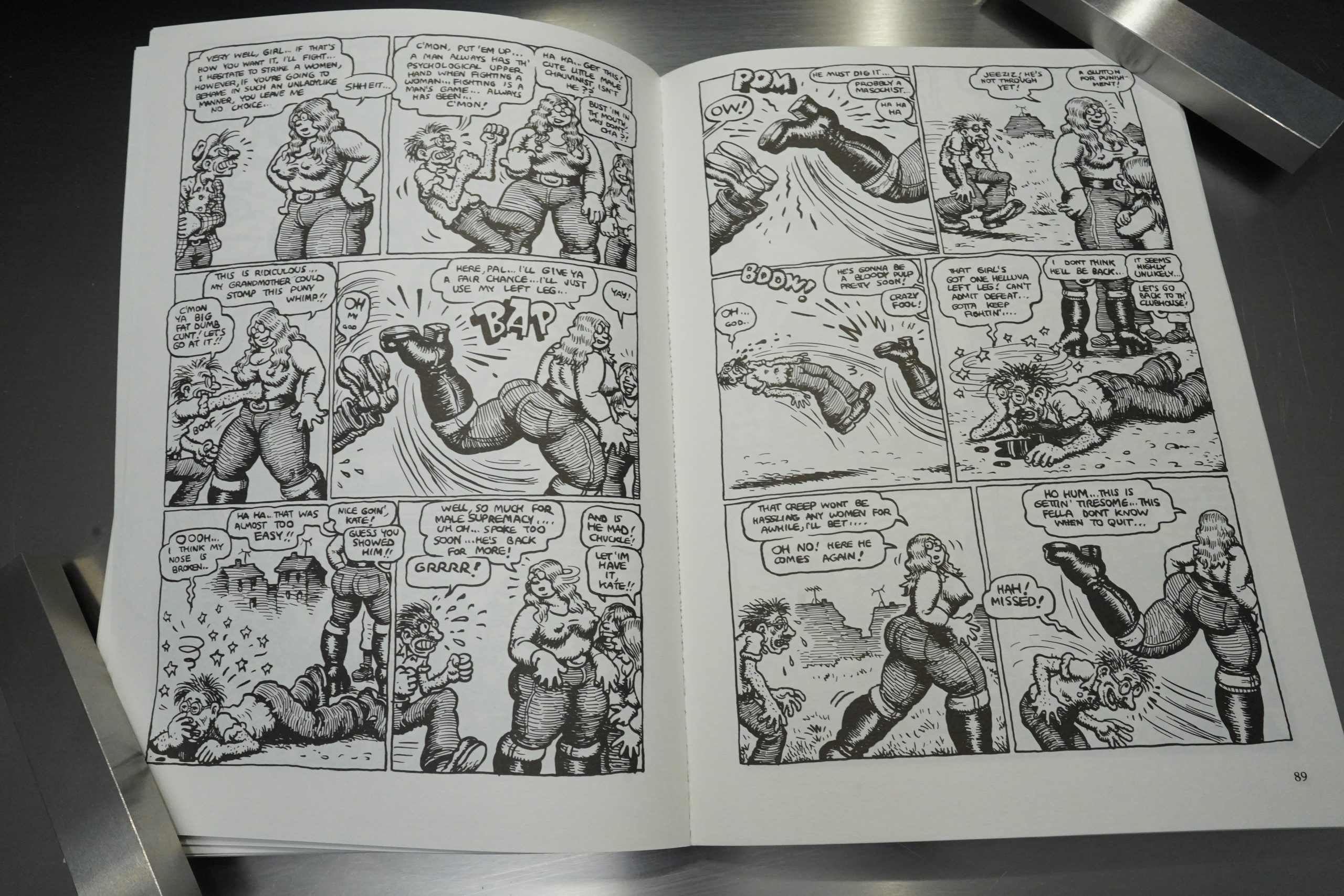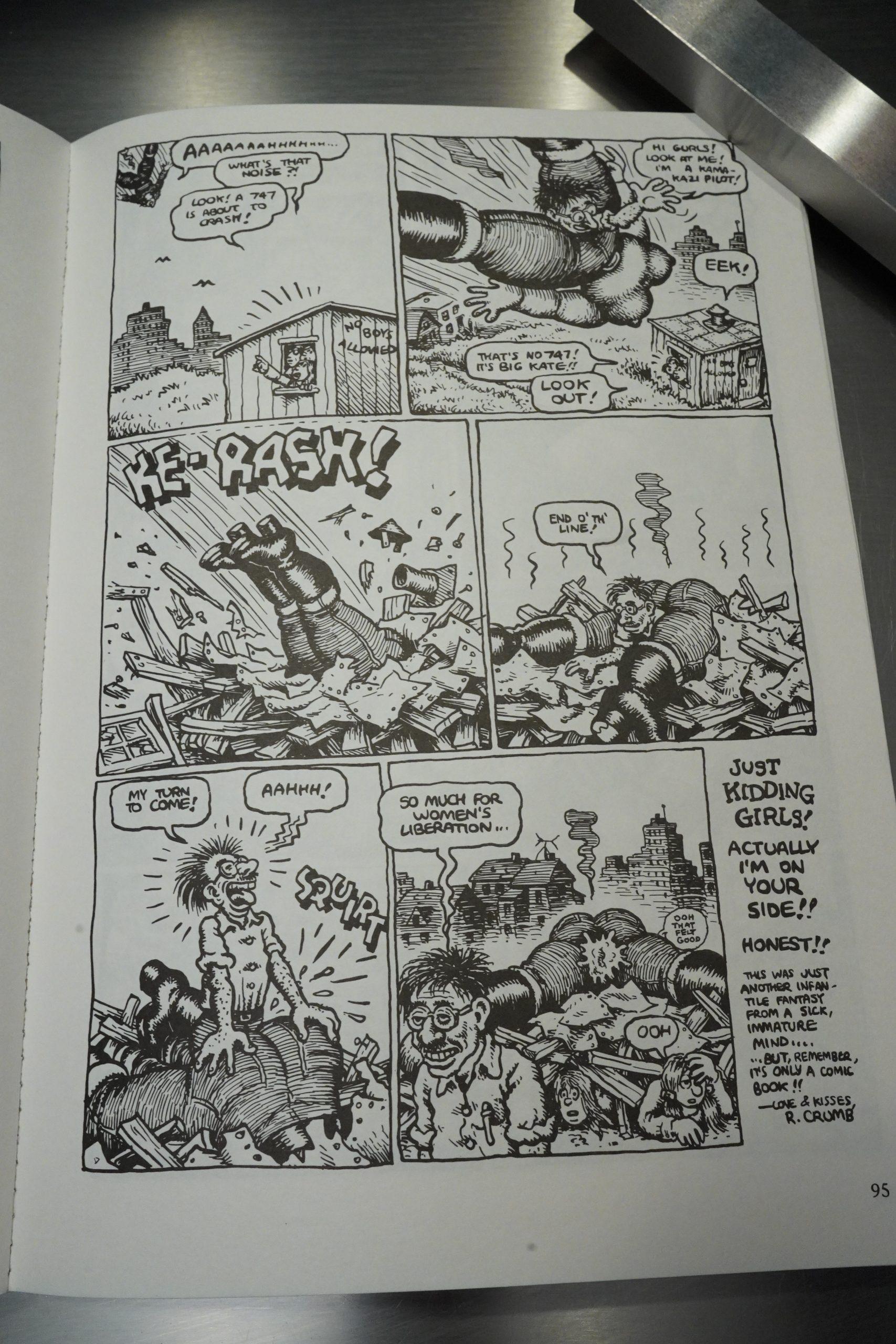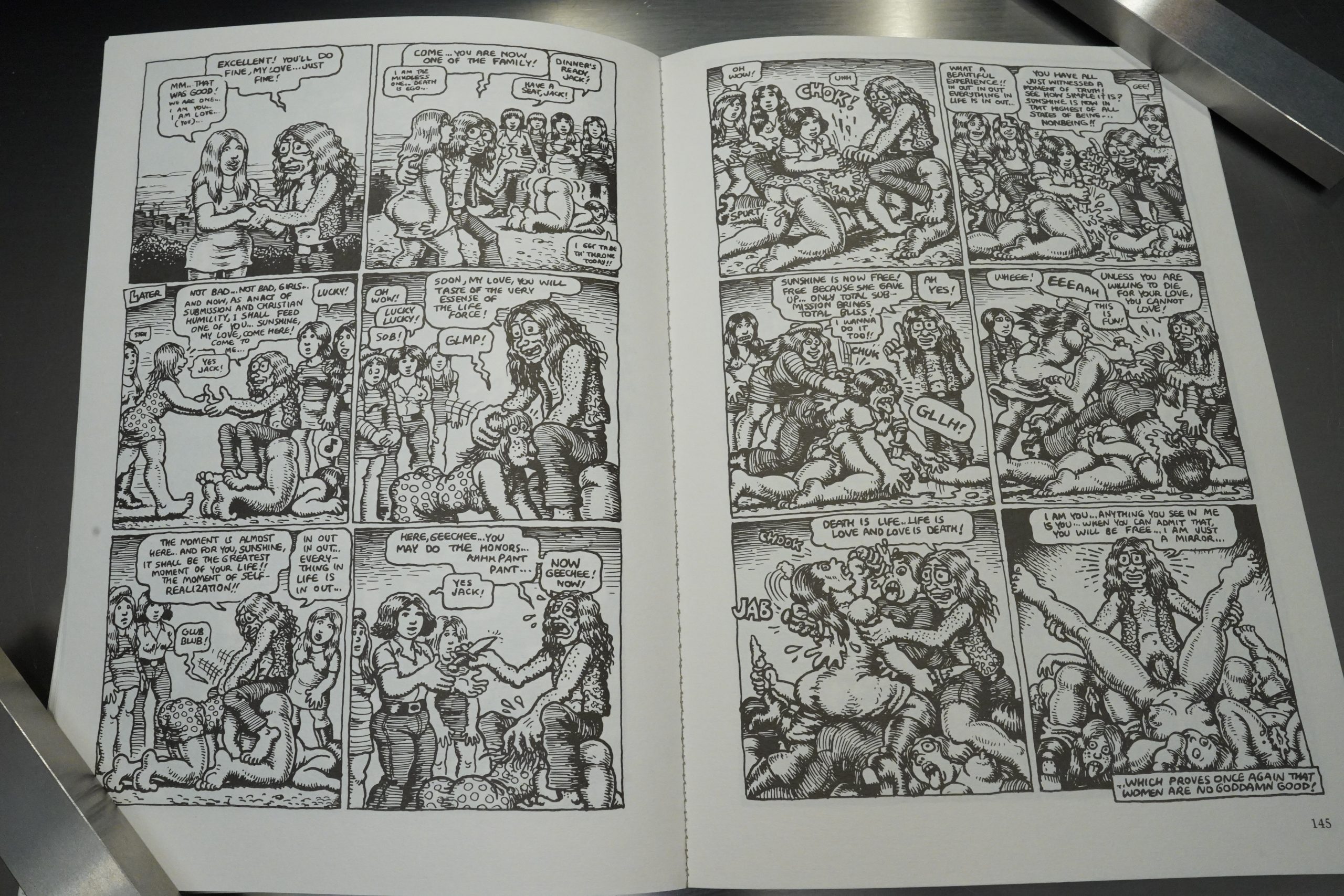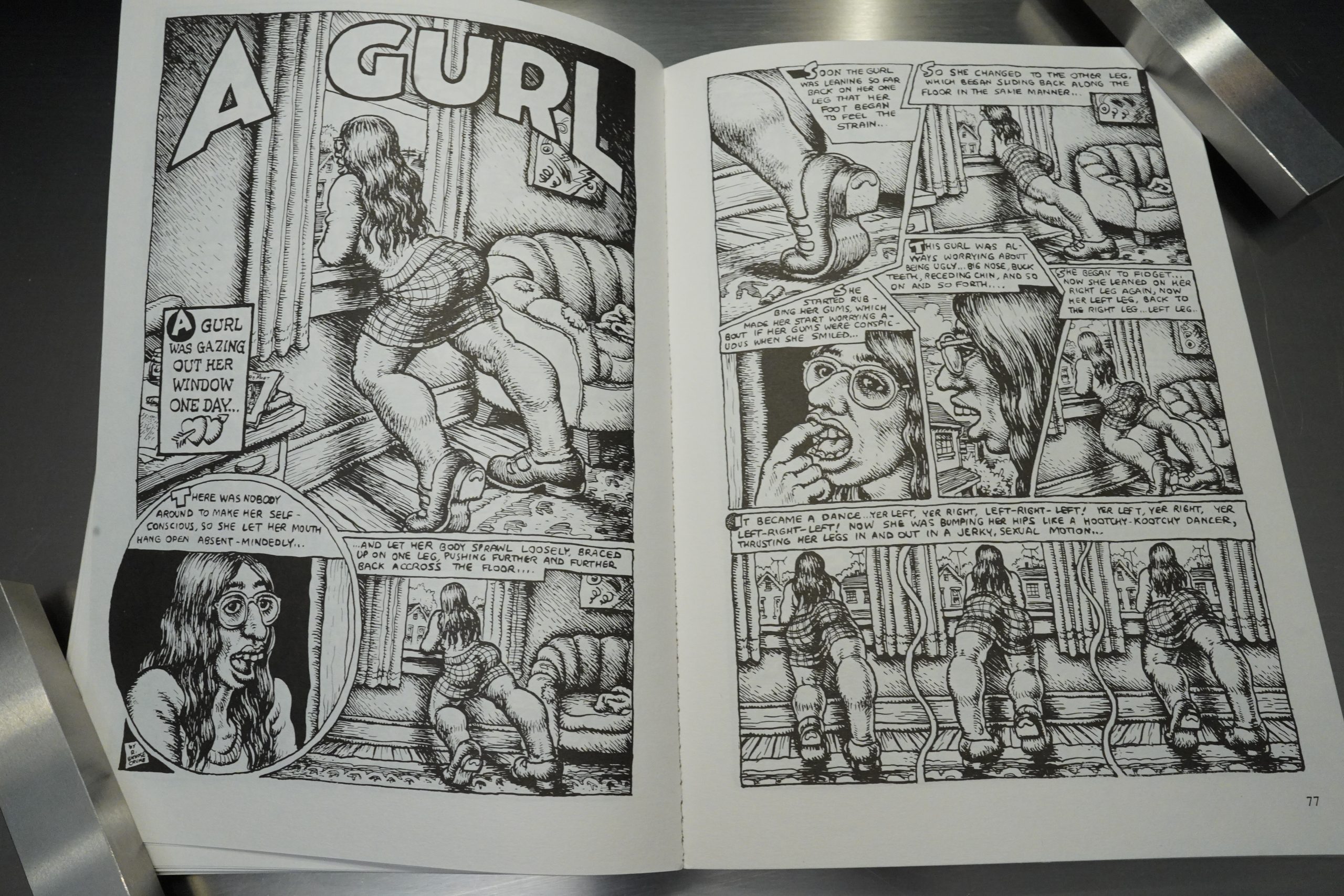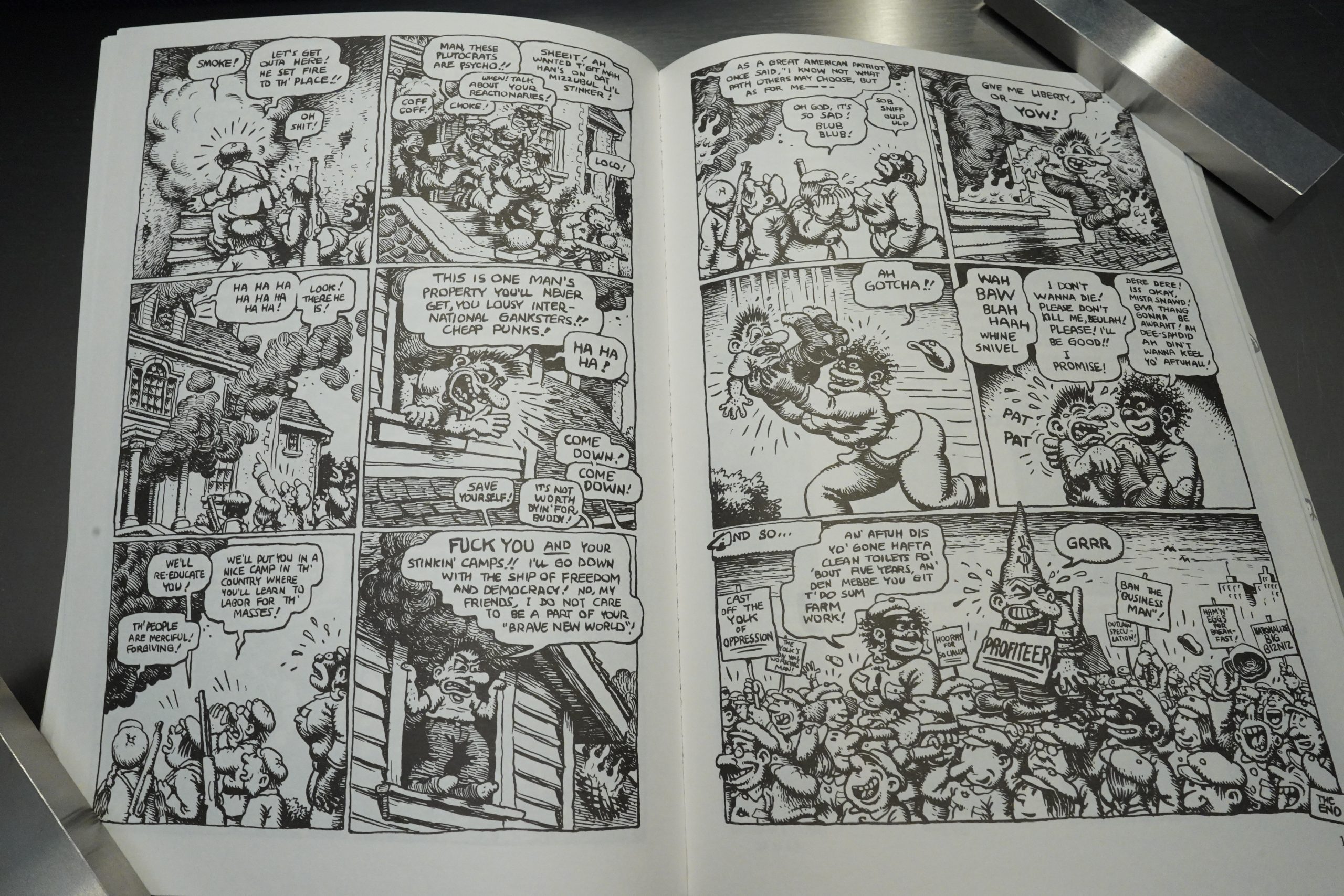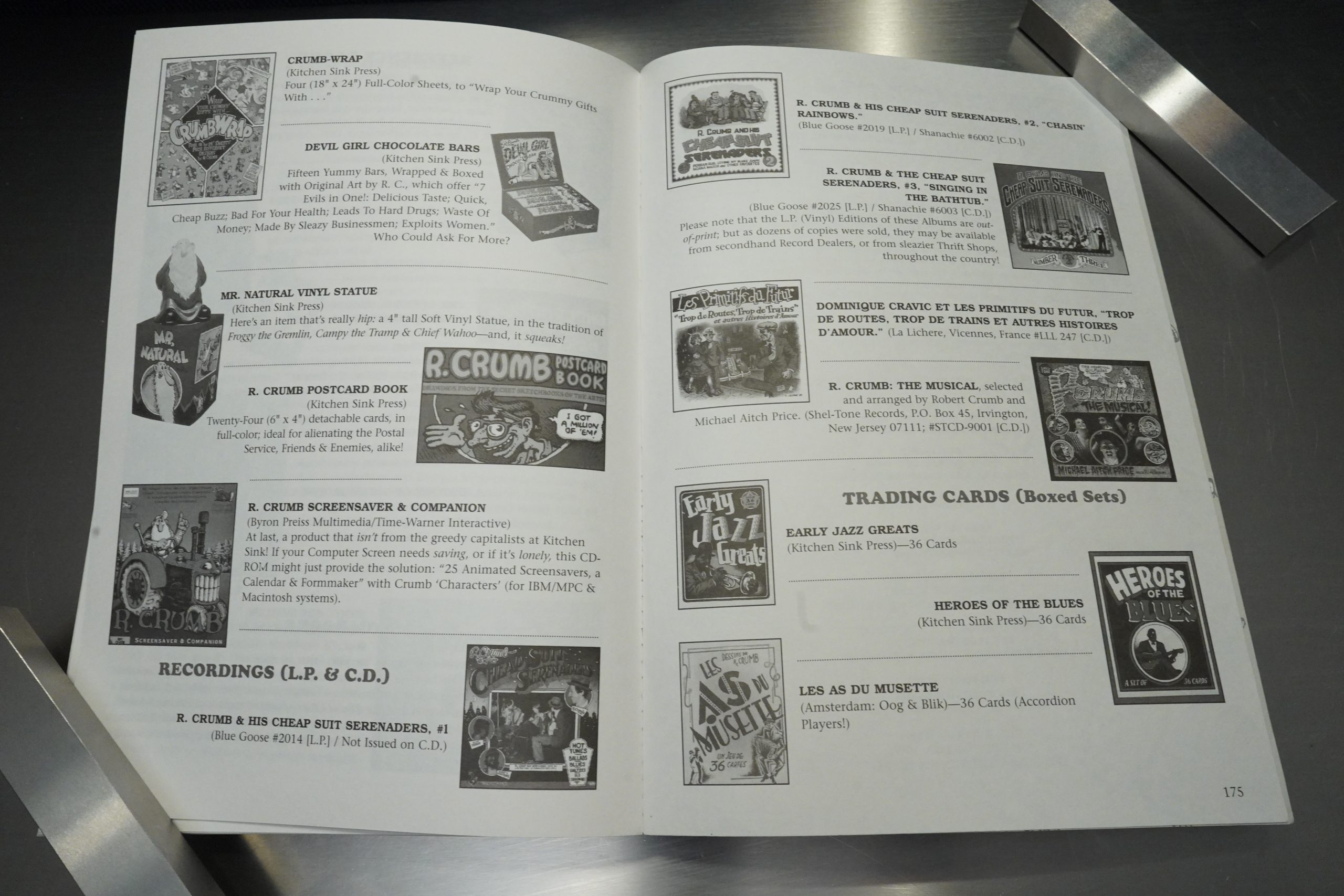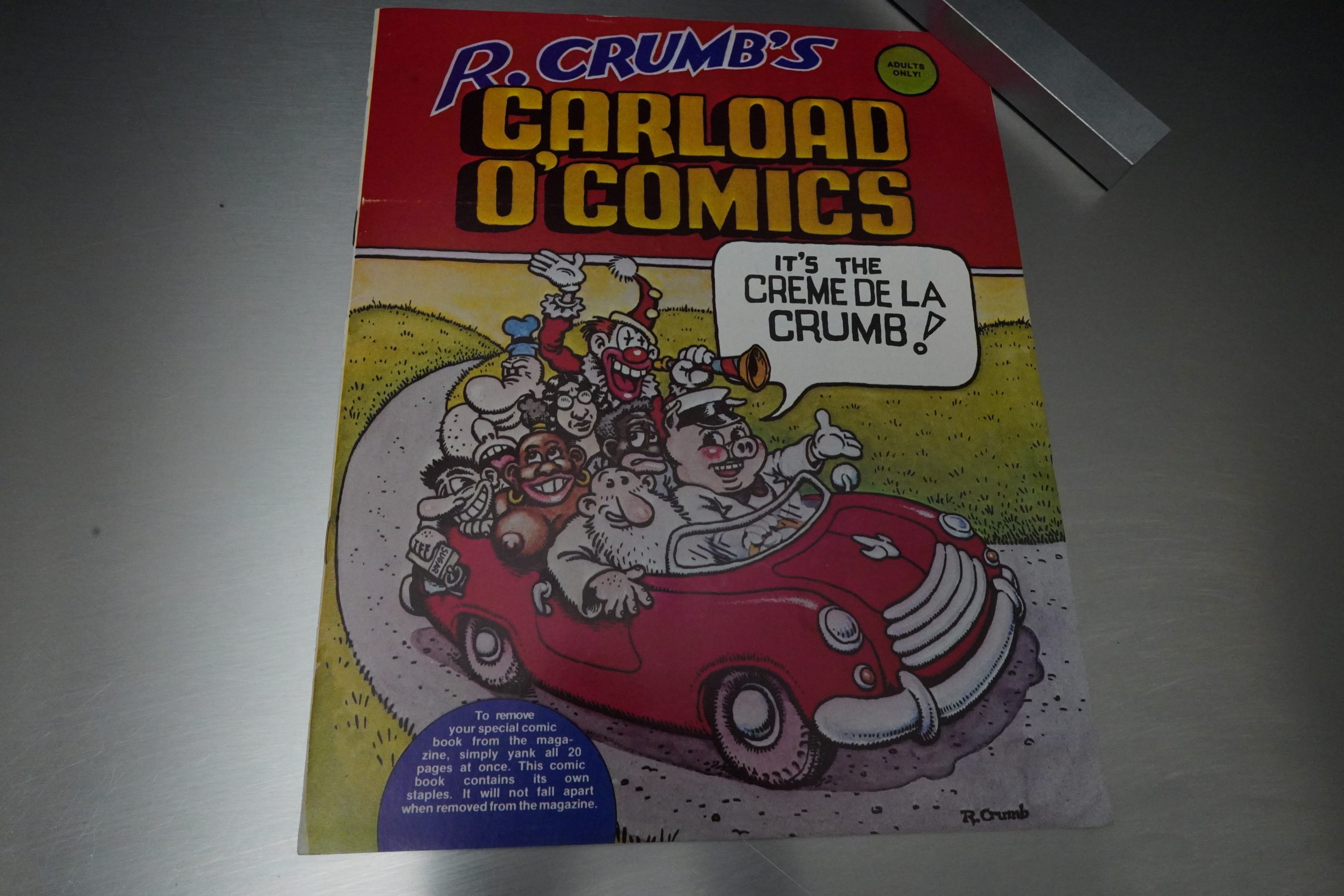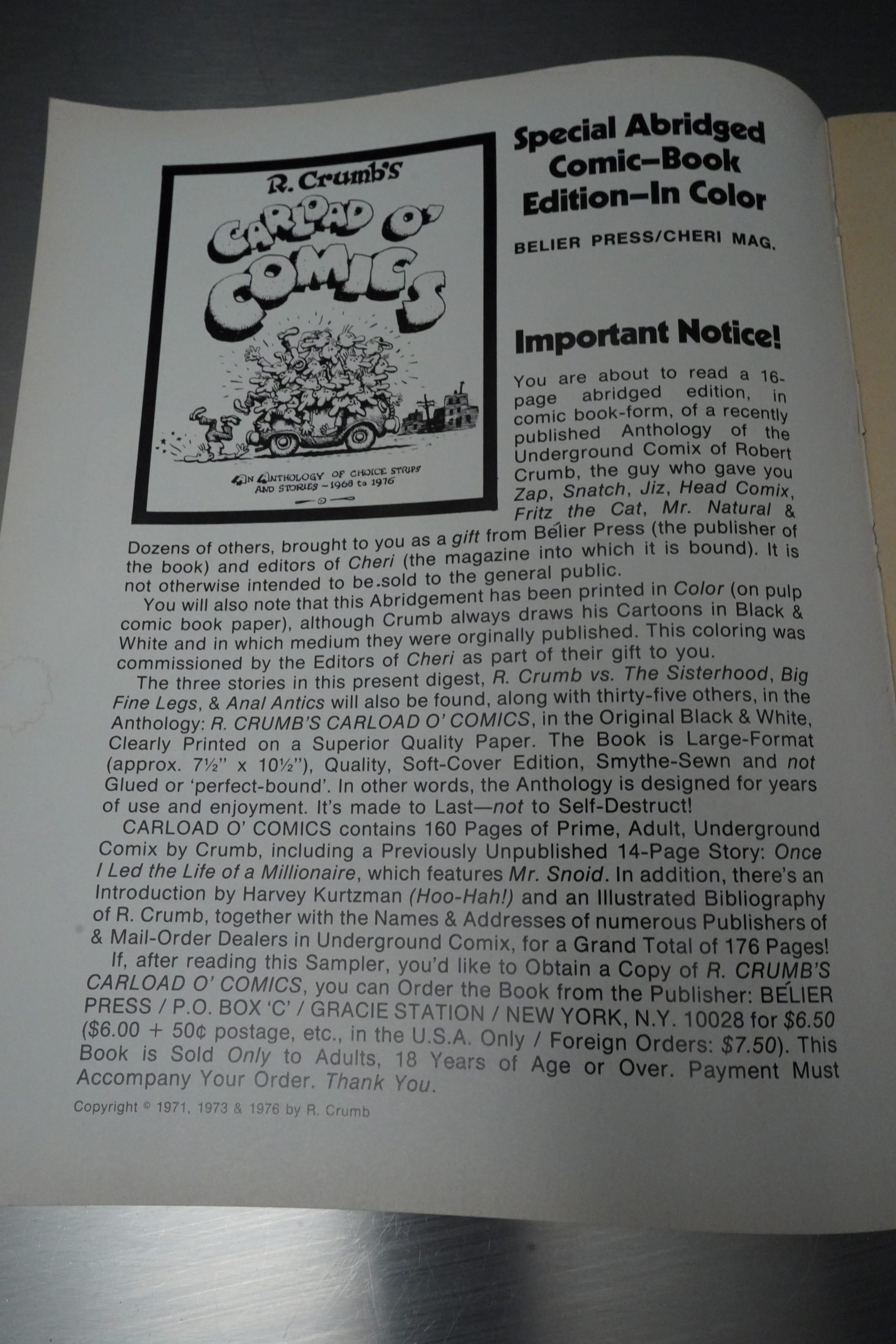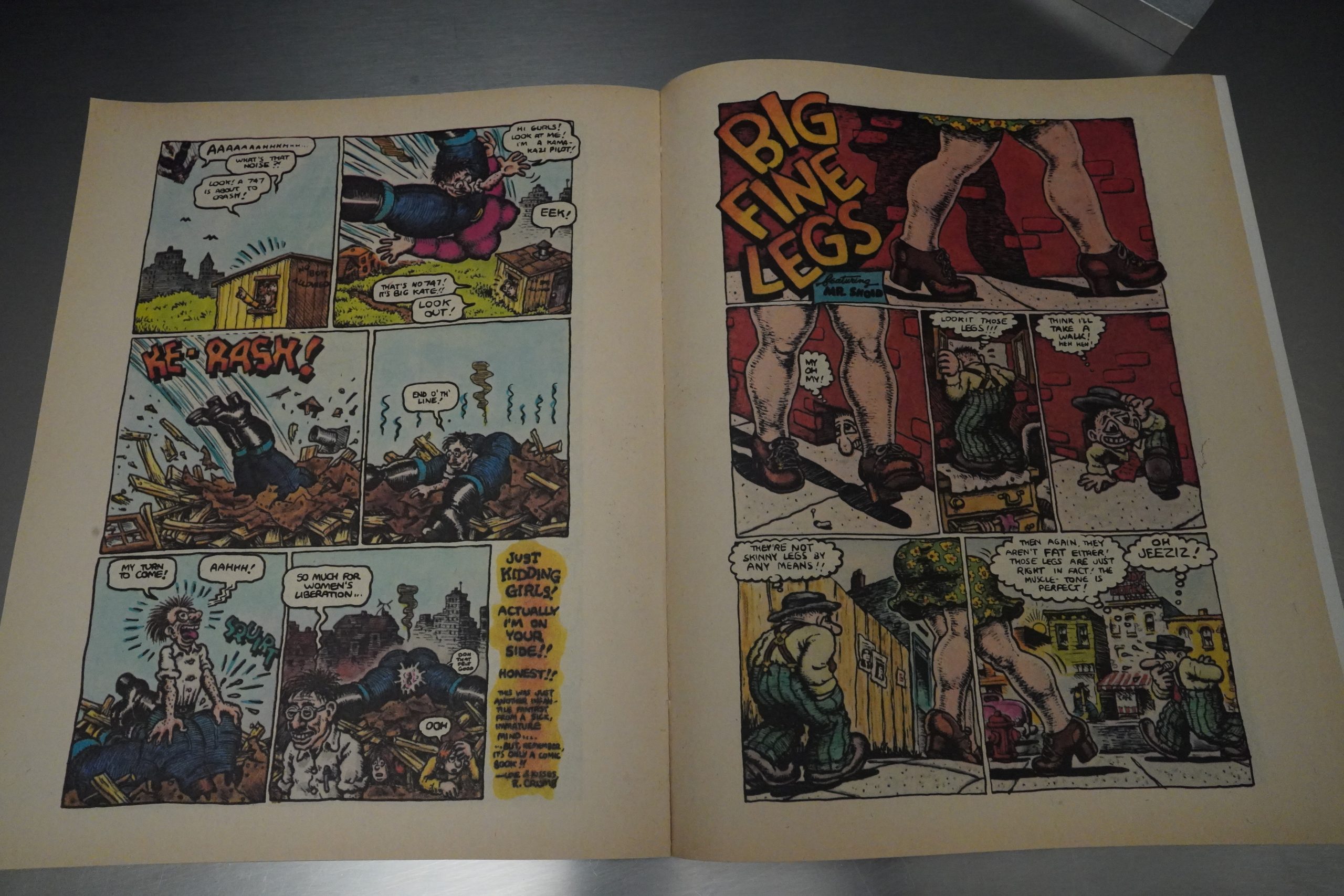R. Crumb’s Carload O’Comics (1996) by Robert Crumb
This collection was originally published in 1976 by Bélier Press, but the fourth printing was co-published by Kitchen Sink in 1996, so I’m covering it on this blog. Besides, I wanted to read this collection. I mean, I’ve read Fantagraphics’ Complete Crumb collection, but that was not a very satisfying presentation of the material, so I was curious to how other collections might read.
The introduction (by J B Rund) is the most forthright introduction I’ve ever read, in my entire life (and that’s pretty long) in a collection of comics. Instead of giving us the hard sell (like “the best comics ever by comics genius R. Crumb”) he explains the selection criteria very clearly: These are comics that were not included in any of the previous collections (like The Apex Treasury), and does not include any Fritz or Zap stuff (because collections for those were already planned), does not include any stuff in magazine ratio, and avoids reprinting any comics in full (because that would sabotage the sale of those comics).
So it’s a collection of odds and ends of previously published comic-sized comics. But! Includes one new 14 page piece. (That we’re reassured will be published separately later, anyway.)
It’s been updated for the 1996 edition — but just to note that they’ve changed the binding, basically.
It’s so far from being a hard sell that it makes your head swim. (And the introduction has a running gag, too.) I love it.
None of the really famous older pieces are in this collection.
One slightly frustrating thing about thing about this collection is that we’re not given any dates for any of the strips (or where they originally appeared). I guess the dates are what I’m most interested in — and it seems we’re talking mostly 1970-1972, with some stuff from 73 and 74.
The thing is… it reads remarkably well. It should feel like a random jumble of randomness, but the sequencing works well. They have wisely not gone for a chronological presentation, but skip around, having a variety of stuff — some absurd little thing next to one of Crumb’s infamous outpourings of, er, stuff.
There are a couple of pretty well-known pieces in here — I think “The Adventures of R. Crumb Himself” is often presented as being particularly revealing of Crumb’s feelings (but I’m not so sure myself).
There are very few autobio strips here — I think this is the only one? (There’s other strips that feature an R. Crumb character, but they’re more clearly fictionalised.)
There’s quite a few of these trippy stories — I guess they’re not usually included in anthologies, because they seem pretty slight it you’re not high, I guess. And I think Crumb started doing them after he felt burned out in the early 70s?
And a couple of his most infamously misogynistic pieces are included (which are often excluded from anthologies, too), like “Underground Hotline”…
… and the most infamous of them all, “R. Crumb vs. The Sisterhood”. It’s been a while since I’ve read this one, and I didn’t quite remember that it started off this way — it’s almost as if Crumb planned on doing something quite different in this strip, but as his approach to cartooning is usually quite improvised, he seems (to me) to work himself into a lather, change his mind, and then we end up here:
It was the last straw for many people, understandably enough.
“Jumpin’ Jack Flash” aims at satirising hippie cult leader types, but when it ends on a pile of dead women like this, you gotta go “hm”.
*adjusts eyebrow down again*
One of the weirdest, and most dreamily pleasant stories in here is “A Gurl”. It’s got a dreamlike quality, and *gasp* has no violence towards any women. It’s quite exceptional.
The book ends with the new 14 page story, and it’s unfortunately not one of Crumb’s most inspired, but the cartooning is fantastic and it has a happy ending. Yay!
So… that’s a great book! It’s thoughtfully put together, and the format is perfect (slightly bigger than comic sized, printed on thick, matte paper with nice binding (as the introduction stressed over many words)). There’s so much stuff in here that you get a feeling of having a cornucopia on your hands, and the sequencing mixes stuff up so that you don’t get the same thing repeated immediately (because Crumb returns to the same themes quite a lot).
A+ no notes.
Except for the ads in the back. Pages and pages of product. But whatevs.
I also somehow have an insert included with Cheri magazine. I think I bought that by mistake on ebay, and I was quite nonplussed when I got it.
More about the binding, so I’m guessing this was written by the same person that wrote the other introduction.
Curiously enough, they include the long “Sisterhood” strip here, which is an odd choice. I mean, I’m guessing that Cheri was a porn magazine? There is indeed some sex in that strip, but it’s mostly about killing feminists, so… But perhaps that’s the point?
I’m unable to find any reviews of the book, but here’s one of the insert:
The stories inside are quintessential Crumb, but all of the (several) copies I have of this comic book are identically weak in one aspect: the color printing is not of good quality. Which is a shame. It’s not that the coloration is bad, but that the printing is actually blurry, which makes it less than ideal to linger on the exquisite penmanship of Robert Crumb.
This is the two hundred and first post in the Entire Kitchen Sink blog series.
